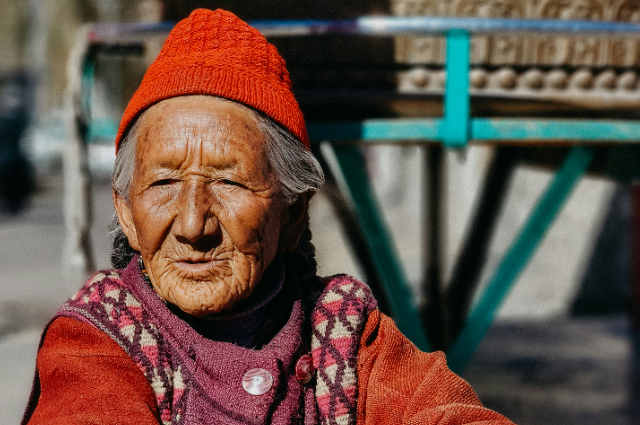
Photo by Yash Parashar on Unsplash
Introduction to the Context
In recent weeks, the region of Ladakh has witnessed significant socio-political mobilization aimed at securing autonomy and legal protections under the Sixth Schedule of the Indian Constitution. Following the recent administrative restructuring, which saw five new districts created, a large-scale march known as the "Delhi Chalo Pad Yatra" was launched. This movement, driven by the Leh Apex Body (LAB) and the Kargil Democratic Alliance (KDA), signifies the growing demand for more extensive constitutional guarantees for the predominantly tribal population of the Ladakh region. The protestors aim to highlight their desire for statehood and the protections of the Sixth Schedule, advocating for the recognition of their distinct cultural and environmental needs.
Genesis of the Movement
Previously part of the state of Jammu & Kashmir, Ladakh was restructured into a Union Territory (UT) after the bifurcation of the former state in 2019 through the abrogation of Article 370. The restructuring of Ladakh's districts was initiated by Home Minister Amit Shah, with the announcement of five additional districts: Zanskar, Drass, Sham, Nubra, and Changthang. These divisions, carved from the larger Leh and Kargil districts, bring the total number of districts in Ladakh to seven, serving a population of 274,289. While these changes were welcomed by some as a long-awaited administrative reform, dissatisfaction remains among those who see the new structure as insufficient to address their demands for greater autonomy and protection of tribal rights.
Initiation of the Delhi Chalo Pad Yatra
The Delhi Chalo Pad Yatra was ceremonially launched from Leh, with hundreds of participants embarking on the journey. Men and women of all ages, waving the tricolour, set out for Delhi to raise awareness about their plight. The yatris aim to cover approximately 25 kilometers each day, with the intention of reaching the national capital by October 2, where they plan to stage a final protest at Raj Ghat. The march represents a unique convergence of groups, including LAB, KDA, environmentalists, political parties such as the Aam Aadmi Party and Congress, and prominent individuals like Sonam Wangchuk.
Objectives and Core Demands
The marchers have a singular focus: to press for the inclusion of Ladakh under the Sixth Schedule of the Constitution. The Sixth Schedule, currently applicable to tribal areas in states such as Assam, Meghalaya, Mizoram, and Tripura, provides for autonomous district councils with legislative, judicial, and executive powers. For Ladakh, with its 97% tribal population, this protection is seen as critical for safeguarding the region’s unique cultural and environmental heritage. Furthermore, the yatra underscores demands for statehood, a legal status that would provide Ladakh with a more robust framework for self-governance and local autonomy over resource management, environmental regulation, and cultural preservation.
Organizational and Logistical Framework
The Pad Yatra commenced with a grand ceremonial launch at Leh’s NDS Park, where prominent leaders, activists, and local citizens gathered in a show of solidarity. The inaugural ceremony featured speeches by key figures from the LAB and KDA, as well as environmentalist Sonam Wangchuk, a widely respected advocate for sustainable development in Ladakh. Members of political parties such as the Aam Aadmi Party (AAP) and the Congress also joined the demonstration, signaling a growing political consensus around the demands of the people of Ladakh. The marchers paused for a night halt at Ranbirpura, with logistical arrangements including medical assistance, food, and rest areas along the route carefully coordinated by local authorities.
The organization of the Delhi Chalo Yatra is a complex logistical exercise, involving coordination across multiple districts and regions. The march is structured to pass through various towns and villages, with new groups of participants joining at different stages along the route. The core group, consisting of LAB and KDA representatives, remains consistent throughout the march, while local communities are encouraged to engage and support the cause. Safety and logistical arrangements are also in place, including the provision of medical assistance, food, rest areas, and communication with local authorities to ensure traffic management and public safety.
Symbolism and Political Implications
The Pad Yatra serves as a powerful symbol of Ladakh's struggle for political recognition and autonomy. By marching towards Delhi, the protestors seek to bring their demands to the center of the nation’s political discourse. The choice of Raj Ghat as the final protest site is equally symbolic, as it reflects the non-violent nature of the movement, drawing inspiration from Mahatma Gandhi’s philosophy of peaceful resistance.
If successful, the movement could set a precedent for other regions with significant tribal populations, potentially reshaping the governance structure of tribal areas across India. The demand for Sixth Schedule status in Ladakh reflects a broader trend towards decentralization and local governance, as marginalized communities seek greater control over their own affairs.
Socially, the Yatra has brought together diverse segments of Ladakhi society, fostering a sense of unity and shared purpose. The participation of both Leh and Kargil in the movement is particularly significant, as these two regions have historically had different political alignments. The collaboration between the Leh Apex Body and the Kargil Democratic Alliance demonstrates a rare convergence of interests, suggesting that the demand for autonomy transcends regional divisions.
Environmentally, the success of the Yatra could have far-reaching implications for the future of Ladakh. With its fragile ecosystem and limited resources, the region faces numerous challenges related to climate change, water scarcity, and land degradation. Autonomous governance under the Sixth Schedule could empower local communities to implement sustainable development practices, ensuring that Ladakh's natural heritage is preserved for future generations.
